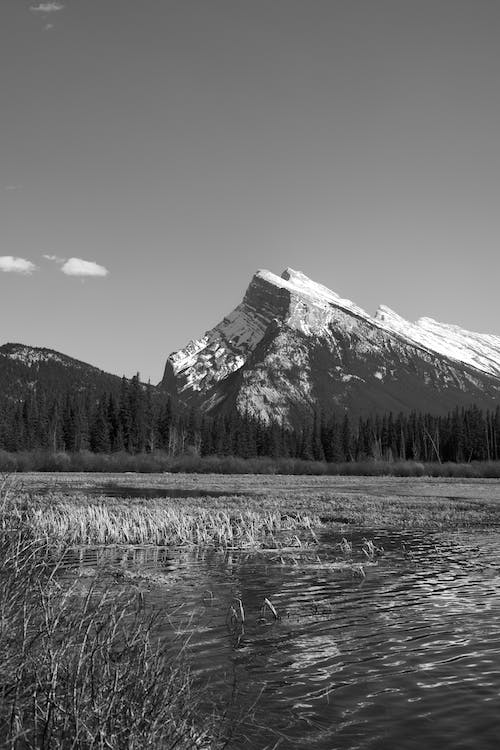Mount Thor, located in Nunavut, Canada, is one of the natural wonders on earth. Standing at a staggering height of 1,675 meters, this majestic mountain is a popular destination for adventure seekers and nature enthusiasts from around the world. But for those unfamiliar with this iconic peak, what exactly makes it so special? In this blog post, we’ll dive in and explore all there is to know about Mount Thor.
Geography
Mount Thor is located 46 kilometers (29 miles) northeast of Pangnirtung, situated in Auyuittuq National Park on Baffin Island, Nunavut, Canada, boasts Earth’s highest vertical drop of 1,250 meters (4,100 feet). The mountain derives its name from Thor, the Norse god of thunder.
The peak of Mount Thor is a sheer drop that’s nearly the length of a mile. However, it is worth noting that the slope is more than just vertical, as the face is measured at a 105-degree overhang. Such a steep incline creates a daunting challenge for even the most experienced climbers, making it a coveted destination for those seeking an adrenaline rush.
Geology and Environmental Makeup
The mountain is a product of the Pangnirtung Fault, which runs through the area and is responsible for the formation of the massive granite pluton that makes up the peak. The rock is predominantly composed of pinkish granite with varying amounts of black mica, feldspar, and quartz. The granite was formed around 1.7 billion years ago during the continent-building process known as the Grenville Orogeny. The unique geology of Mount Thor has made it a popular destination for climbers and geologists alike, offering an opportunity to study the intricate details of its formation.
Getting there
To reach Mount Thor, located on Baffin Island in Nunavut, Canada, requires a combination of physical preparation and logistical planning. The hike itself is a challenging and strenuous 5-day trek that requires a high level of fitness and experience with backcountry hiking. Access to the starting point of the hike is typically via a chartered flight from Ottawa or Iqaluit to Pangnirtung, a small Inuit community on the east coast of Baffin Island.
To reach the base of the mountain in the park entrance at the head of the Akshayuk Pass, visitors must first take a 30km boat ride from Pangnirtung, or use a snowmobile if the fjord is frozen. This route, which cuts across the Cumberland Peninsula, serves as the main travel route throughout the year, but is especially important during the winter months.
At the head of the valley lies the park entrance, serving as a gateway to the breathtaking scenery that awaits visitors. The one and only Ranger Station within the park is also located here, offering a wealth of information and resources for those embarking on their exploratory journey. The valley floor is home to two prominent rivers – the Weasel and Owl – which provide stunning views and a serene atmosphere.
Visitors are encouraged to exercise caution and take the necessary safety precautions while traversing the valley, and more so when they start to ascend to the mountain.
For individuals looking to take on the monumental Mount Thor, the summer months between mid-June to mid-August are the best time to climb. These months provide climbers with the most favorable weather conditions, with milder temperatures, less precipitation, and longer daylight hours. While it is possible to stretch the climbing season into the first week of September or earlier in June, this is dependent on the weather conditions and is not recommended for inexperienced climbers.
Mountaineering in Mount Thor
The mountain’s steep and rugged terrain requires expert technical skills and endurance, making it an ideal destination for experienced mountaineers seeking an adrenaline-filled adventure. The ascent to the summit of Mount Thor offers breathtaking views of the surrounding landscape, including the impressive fjords and glaciers.
Climbing Mount Thor requires careful planning and preparation, including obtaining proper permits and equipment, as well as ensuring one’s physical and mental readiness for the intense climb.
Scaling Thor has been a daunting task for mountaineers for many years. Before the four-man American team successfully completed the climb in May 1985, there had been over 30 failed attempts to reach the top. This challenging feat required not only physical strength, but also strategic planning and a keen understanding of the terrain.
Since it is home to the world’s tallest peak, Mount Thor has become a popular destination for adrenaline junkies, particularly BASE jumpers and paragliders seeking the ultimate rush. The steep and rocky terrain, combined with the unparallelled height of the cliff, provides the perfect setting for extreme sports enthusiasts. While the activity of BASE jumping and paragliding is highly dangerous, adventurers continue to flock to Mount Thor each year in pursuit of the unparalleled thrill and breathtaking views that can only be experienced from the top of this mammoth mountain.
Visitors to the Akshayuk Valley are advised that camping is permitted in the area, but only at the designated official site located near the entrance to the valley, close to Overlord Mountain. It is recommended that campers avoid setting up too close to the Weasel or Owl rivers, and seek sheltered areas due to the strong winds that can whip through the valley. For those looking for more comfortable accommodation, there is a hut for Thor Peak that can accommodate up to 4-6 people. Additionally, there are huts available on Asgard and at the park entrance near Mt. Overlord.
Conclusion
Mount Thor is a unique and impressive natural wonder that is worth exploring for adventurous tourists. Its towering height, steep slopes, and challenging climbing routes make it a thrilling destination for experienced climbers and hikers.

